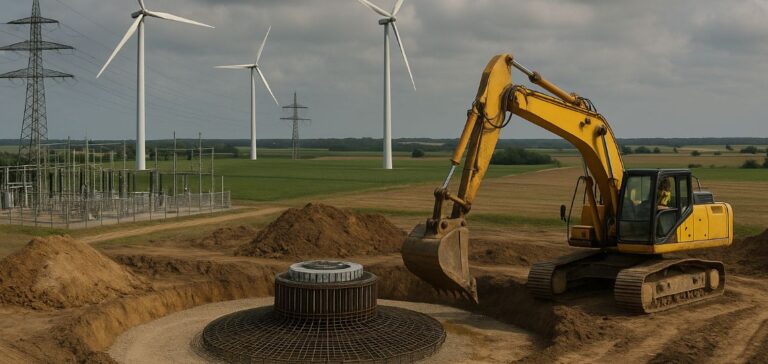The first wind turbine of the “He Dreiht” project, currently the largest offshore wind farm under construction in Germany, has been installed. Energie Baden-Württemberg AG (EnBW) achieved this key milestone by using the Vestas V236-15.0 MW offshore turbine for the first time, the most powerful currently available on the market. The wind farm is located approximately 85 kilometres northwest of Borkum and 110 kilometres west of Helgoland.
A subsidy-free project with record capacities
He Dreiht represents a total capacity of 960 megawatts (MW) and will operate without public funding, a first for a project of this scale in Germany. The farm will comprise 64 turbines capable of supplying the equivalent of 1.1 million households. EnBW stated that the production of a single rotor rotation can provide enough electricity to power four households for one day.
Michael Class, Head of Generation Portfolio Development at EnBW, stated that the project plays an important role in the company’s goal to increase its installed renewable energy capacity from 6.6 gigawatts (GW) to over 10 GW by 2030.
A large-scale construction site coordinated from Hamburg
More than 500 employees will be mobilised on the offshore site during peak periods, supported by over 60 vessels dedicated to construction operations. The installation of the 64 foundations was completed the previous year. Components are transported from the port of Esbjerg, Denmark, before being installed using the Wind Orca vessel after a twelve-hour sea journey.
Alongside the installation of the turbines, internal cabling work within the wind farm is progressing. Logistical coordination is managed from EnBW’s offshore office in Hamburg.
International investors participate in the capital
A consortium made up of Allianz Capital Partners, AIP Management and Norges Bank Investment Management holds 49.9% of the shares in the He Dreiht project. This participation is part of EnBW’s strategy to expand its offshore portfolio, which currently has a capacity of around one gigawatt, with operational projects such as Baltic 1, Baltic 2, Hohe See and Albatros.
EnBW is also developing, in partnership with BP, three new offshore wind farms in the United Kingdom, namely Mona, Morgan and Morven, with a combined capacity of 5.9 GW.






















